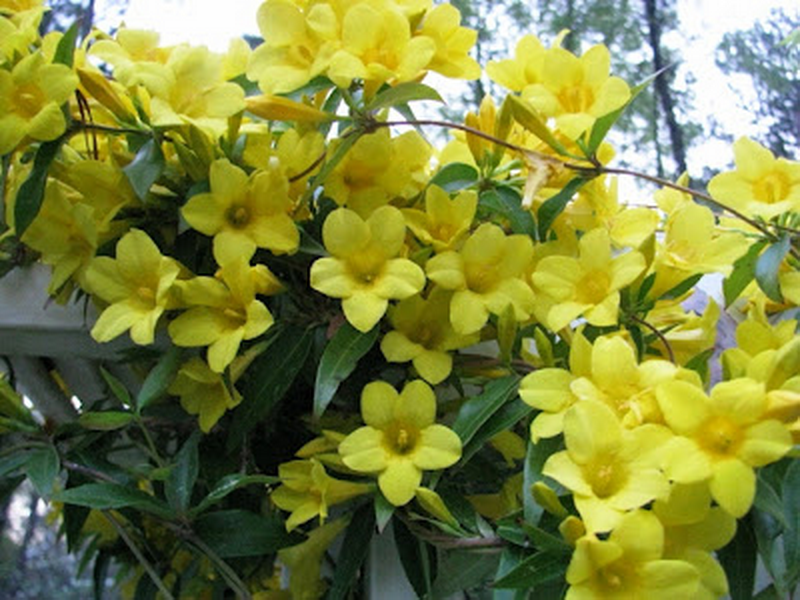Yellow Jasmine
Gelsemium rankinii
Click here to download a PDF of this plant information page (for printing).

Sun Exposure: Full Sun, Part Sun
Season of Interest: Spring, Summer, Fall
Bloom Time: May - October
Bloom Color: Yellow
Height: 15 to 20 ft.
Spread: 3 to 6 ft.
Spacing: 6 ft.
Water Needs: Average
Maintenance: Prune after fall bloom
Soil Type: Loam, Sandy, Clay
Soil pH: Acidic (pH < 6.0)
Soil Drainage: Well drained to wet
Pests: None
Diseases: None
Wildlife: Bees, Buterflies, Hummingbirds

Description:
Yellow Jasmine is a fast-growing highly prized vine, noted for its bright yellow flowers that bloom heavily in spring, sporadically through the summer, and then a second heavy bloom in fall. It's evergreen foliage makes the bright yellow flowers stand out. This vine is suitable for trellis, fences, cascading over walls, ground cover, and privacy screens. It thrives in enriched, slightly acidic, evenly moist, well-drained soil under full to partial sun. The vine has a climbing growth habit and is attractive to hummingbirds as well as bees and butterflies. Both the stems and leaves produce an alkaloid compound that deters deer from eating it. For more information see:
plants.ces.ncsu.edu/plants/gelsemium-rankinii
Care and Growing Tips:
Yellow Jasmine will tolerate some shade, but it blooms much more prolifically and grows much more densely in full sun. In the right conditions, it will grow three to five feet per year. It’s also drought tolerant to an extent, but again will perform much better if watered regularly. And the same can be said for soil. It will survive in poor soil, but is much happier in organically rich soil with a pH around 6.0.
Fertilize yellow jasmine in late spring with a moderate amount of a slow-release balanced fertilizer. Don’t over-fertilize, as this will reduce flowering. If you’re planting for ground cover, space plants three feet apart; if you’re looking to cover a vertical space, space the plants four to eight feet apart.
Bring out the clippers after it blooms in the fall. Clean out the old, dead stems and do some general cleanup, cutting it a bit smaller than the full size you’re aiming for. If you’re growing jessamine as a ground cover, keep the vines trimmed to about three feet long, but be sure to do the fall trimming only after the bloom period.
Yellow jasmine has no serious disease or insect problems. If the leaves stay wet for an extended period, you may see some fungal leaf spotting, which presents as brown, tan, or black spots and can be treated with a fungicide. On very rare occasions aphids may be found on the new growth at the tips of the vine but generally do not cause much harm. They can b removed by spraying with a garden hose.